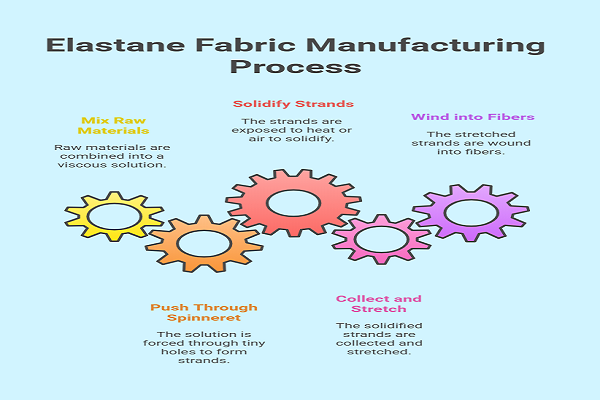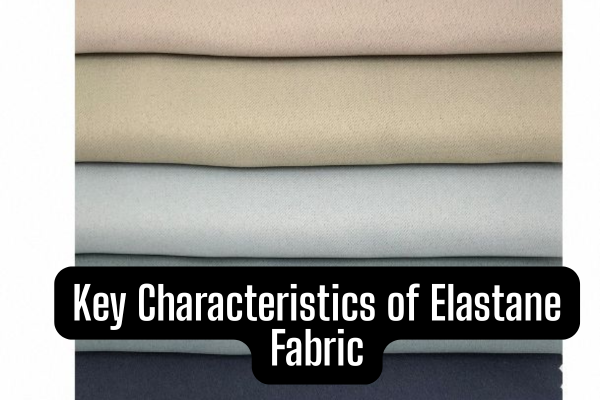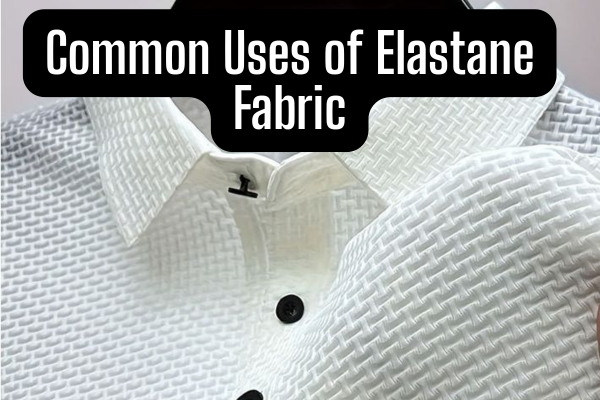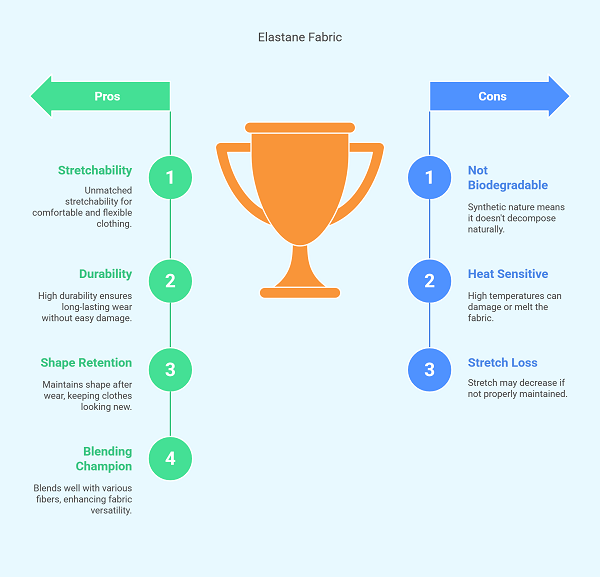What Is Elastane Fabric?
Ever wondered what makes your yoga pants stretch like magic? That’s elastane fabric. Known for its incredible elasticity, elastane is a synthetic fiber that can stretch up to 600% of its original length and still snap back to its original shape. It’s like the rubber band of the textile world—but way more stylish.
Elastane, also called Spandex in the US and Lycra (a brand name), is a fiber made from polyurethane. This stretchy material is blended with other fibers like cotton or polyester to add flexibility to fabrics used in everyday wear and performance gear.
How Elastane Fabric Is Made

The Synthetic Origin
Elastane doesn’t grow on trees. It’s man-made. The base chemical is polyurethane, created through a reaction between a polyester and a diisocyanate. This gives it that signature rubbery flexibility.
The Manufacturing Process
The process used is called dry spinning. It goes like this:
- The raw materials are mixed into a viscous solution.
- This solution is pushed through a spinneret (tiny holes).
- As it exits, it’s exposed to heat or air to solidify.
- The final strands are collected, stretched, and wound into fibers.
Boom—elastane is born.
Key Characteristics of Elastane Fabric

High Elasticity
Let’s be real—this is its superstar trait. Elastane can stretch 4 to 7 times its original length. Whether it’s gym leggings or skinny jeans, that comfort-flex comes from elastane.
Lightweight and Soft Feel
Despite its stretch power, elastane is light as air. And when blended with cotton or polyester, the resulting fabric feels soft and smooth on the skin.
Breathability and Moisture Control
Elastane itself isn’t super breathable, but when it’s mixed with breathable fibers, it wicks moisture away from the body. That’s why it’s so common in sportswear and undergarments.
Common Uses of Elastane Fabric

Sportswear and Activewear
From compression shirts to yoga pants, elastane is everywhere in sports fashion. Around 80% of activewear globally contains some elastane due to its flexible and supportive fit.
Everyday Clothing
- Jeans with a bit of stretch? Elastane.
- Body-hugging dresses? Elastane again.
- Even your fitted T-shirts probably contain 2–5% elastane.
Medical and Industrial Uses
Surprise—elastane is also in compression garments, surgical wear, and orthopedic braces. Its durability and stretchiness make it perfect for specialized applications.
Pros and Cons of Elastane Fabric

The Perks of Using Elastane
- Stretchability – Obvious but unmatched.
- Durability – Doesn’t wear out easily.
- Shape Retention – Clothes bounce back after wear.
- Blending Champion – Works well with almost all fibers.
The Downsides You Should Know
- Not Biodegradable – Yep, it’s synthetic.
- Heat Sensitive – It hates high temps.
- Can Lose Stretch Over Time – Especially if not cared for properly.
How to Care for Elastane Fabric
Washing Tips
- Always wash in cold or lukewarm water.
- Use mild detergents—no bleach.
- Choose the gentle cycle if machine-washing.
Drying and Storage
- Never tumble dry on high.
- Lay flat or hang to dry.
- Avoid ironing—if you must, use low heat and a protective cloth.
Elastane vs Spandex vs Lycra – What’s the Difference?
Here’s the deal: They’re the same thing.
- Elastane is the generic name used in Europe.
- Spandex is what Americans call it.
- Lycra is a brand name owned by The Lycra Company.
It’s like soda vs pop vs Coke—same fizz, different names.
Is Elastane Fabric Sustainable?
Short answer? Not really. Elastane is petroleum-based and non-biodegradable. Only recycled elastane, which is still pretty rare, offers a greener option. Brands are experimenting with bio-based elastane, but it’s not yet mainstream.
Final Thoughts
Elastane fabric might not be nature’s gift, but it’s definitely a gift to your wardrobe. It stretches, supports, and keeps things snug without turning you into a human sausage. From a textile engineering standpoint, its versatility is off the charts.
Just treat it kindly—skip the dryer, keep it cool, and don’t over-wash. Elastane may not be eternal, but with care, it can be your closet’s MVP for years.
FAQs About Elastane Fabric
Q1. Is elastane fabric good for hot weather?
Yes—especially when blended with breathable fibers. It wicks away sweat and feels light on the skin.
Q2. How much elastane should be in clothing?
Usually 2–10% elastane is enough for stretch. Sportswear may have more for compression and flexibility.
Q3. Can elastane cause allergies?
Rarely. Most people tolerate it well, but those with polyurethane sensitivity might have issues.
Q4. Does elastane shrink after washing?
Not really. It holds its shape well—but only if you avoid high heat.
Q5. Is elastane better than polyester?
They’re different. Polyester offers durability; elastane provides stretch. The best fabrics use both.
